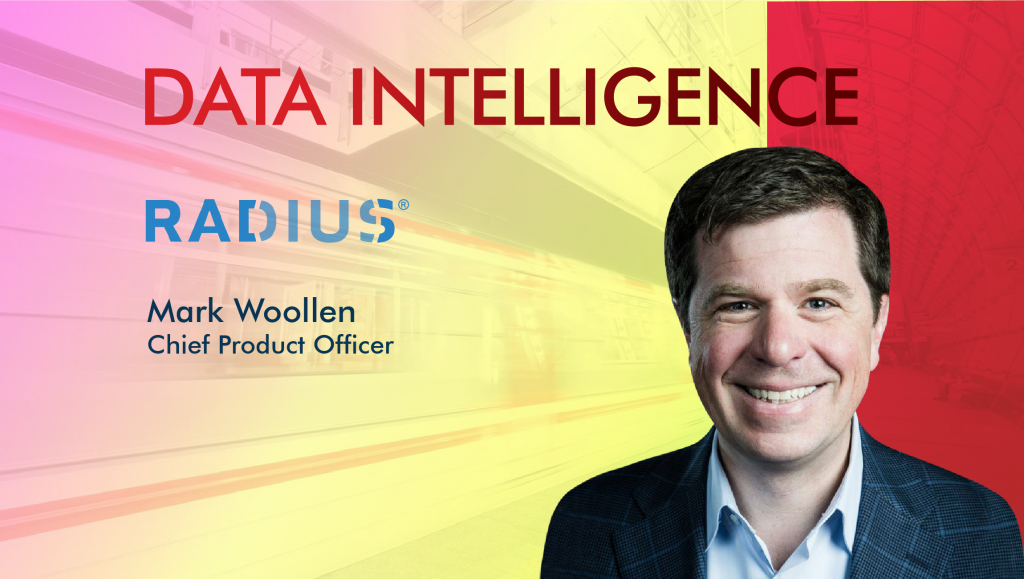
Mark Woollen
Chief Product Officer, Radius Intelligence
Real-time sales intelligence can accelerate sales deals. Behavioral Data and Audience Segmentation, when they come together, could enable organizations to solve the major pain points during sales prospecting campaigns. To understand how contemporary B2B data and predictive marketing software helps marketers build a ‘Network-Effect’ driven model, we spoke to Mark Woollen, CPO at Radius Intelligence.
Tell us about your role at Radius and the team/ technology you handle.
I am passionate about building market-redefining products based on close collaboration with customers.
As Chief Product Officer at Radius, I work closely with the customer service, research and development, and go-to-market teams and support each in their overarching goals. This includes growing a new category, helping customers overcome challenges, and driving top-notch design and user experience.
How do you define your ‘Ideal Customer’ profile?
Radius’ solution is tailored to meet the needs of all B2B organizations, both large and small, across all industries. That said, Radius primarily targets enterprise-level, high-growth startups and Fortune 500 companies across insurance and financial services, business supplies, HR and payroll, business software, telecommunications, and high-tech verticals.
Companies investing in growth and competing in crowded markets are looking for that competitive edge–how do we find buyers faster and more efficiently? And as nearly every industry becomes more and more reliant on technology and digital systems, they become even more dependent on data to reach potential customers; and without proper data intelligence, their systems become operational and information becomes out of date. Radius provides this solution – a data intelligence software that helps some of the largest companies in the world find and reach their next customers.
What data points help you close the gap between product recommendations and real customer experiences?
In just one hour from now, 521 business addresses will change. During that same span, 872 telephone numbers will switch or disconnect, 1,504 URLs will be created or altered, and 158 companies will modify their corporate structure. Prospects have never been more difficult to track or harder to reach and the data trials are only getting tougher.
Organizations must continuously update CRM and MAT data to power decisions, make recommendations, and conduct calculated outreach to potential customers, providing an elevated and targeted experience. By determining the overall health of internal ecosystems, including identification of duplicate records, out-of-business records, incomplete records and more, companies will be better prepared to drive revenue and communicate with real potential customers by working with the most accurate data available.
At the end of the day though, good versus bad data is not the chief worry for marketers. They care most about running high-performance marketing campaigns that lead to great outcomes. To accomplish this, organizations must connect their system of record to a network of record and become stewards of their data. This becomes especially critical given the rise of AI-based technologies like predictive analytics that rely on clean, rich foundational data to function correctly. Companies should incorporate key performance tactics like omnichannel marketing and partner marketing to drive disruptive advantage within their respective market segment, all of which starts with quality data. That said, removing the obstacles between data and revenue does not happen overnight.
Organizations must fully commit to the intensive process that is required for properly rectifying their data and seek out a solution that provides unlimited access to B2B data and intelligence to find, target and convert their best prospects.
Do you see Behavioral Data and Audience Segmentation coming together to solve the major pain points during sales prospecting?
Absolutely!!!
Finding real buyers takes real intelligence on both who they are and what they’re doing. Traditional audience segmentation hones in on potential buyers based on “fit.” Do these prospects look similar to those that have already bought?
This is still an essential first step. Fit-based intelligence helps account-based organizations identify their target account lists and campaign managers create tailored campaigns for each profile.
Behavioral data is the next layer down the buyer’s journey. Once you’ve defined a target market or segment, you first want to pursue the prospects that are actively in the market to buy, or that are already engaged and aware of your brand.
This is why intent data–3rd party sources of behavioral data–have become very important in targeting.
Could you elaborate on the ‘Network-Effect’ driven model used to build Radius Prospector and Radius Connect?
Radius has tapped into a method that very few business-to-business applications employ, but the most disruptive consumer platforms (Facebook, Amazon, Uber, AirBnB) use as the foundation for their defensible positions: Network-effects. A network-effect driven model is defined by a product that improves with every new user that joins.
The valuable prospect data and segmentation that sales leaders and sales reps derive from Radius Prospector and Radius Connect starts with connecting their CRM system to The Network of Record.
This is our proprietary data source that has proven to be more accurate and up-to-date than other B2B data sets. How? Because as more companies connect to The Network of Record, the more data we can use to validate our core data asset.
The Network of Record is constantly learning and improving by collecting and comparing data from hundreds of companies and over a billion business interactions. That’s our network-driven model, and our customers are seeing significant lifts in reach and efficiency as a result.
What are your predictions on the state of Data Intelligence and Sales Analytics technologies in 2018? To what extent would the sales effectiveness be improved by AI/ML adoption?
First, mastering data quality and governance will be priority #1. We have seen proof that a more advanced data strategy makes companies twice as likely to outperform revenue targets (HBR). It will be important for users and buyers out there to understand that AI doesn’t always mean fancy predictive scores and recommendations.
Artificial Intelligence is also used to decide how to match, normalize, update, and maintain data quality. Organizations will finally realize their data strategy is their growth strategy.
People-based marketing in B2B will go from nice-to-have, to must-have. Whether your sales prospecting or ad targeting 2018, buyers will continue to demand more personalized experiences and our budgets will require dollars are being spent on the right people–not just the right accounts.
Deciding who those people are and where to reach them will require the help of machines. There are frankly just too many decisions and sales is too biased to fully self-determine who they’re going to go after next.
Lastly, technologies will need to set a standard for B2B data privacy. Consumer platforms were kind of caught this year. Companies like Radius and others are taking privacy seriously and putting proactive systems in place.
Thanks for chatting with us, Mark.
Stay tuned for more insights on marketing technologies. To participate in our Tech Bytes program, email us at news@martechseries-67ee47.ingress-bonde.easywp.com
























